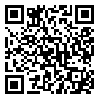BibTeX | RIS | EndNote | Medlars | ProCite | Reference Manager | RefWorks
Send citation to:
URL: http://sjsph.tums.ac.ir/article-1-5293-en.html
2- Ph.D. Assistant professor, Department of Community Medicine, School of Medicine, Alborz University of Medical Sciences, Karaj, Iran
3- Ph.D. Assistant professor,Obesity and Eating Habits Research Center, Endocrinology and Metabolism Molecular–Cellular Sciences Institute, Tehran University of Medical Sciences, Tehran, Iran
4- Ph.D. Assistant professor, Department of Cellular-Molecular Nutrition, School of Nutrition Sciences and Dietetics, Tehran University of Medical Sciences, Tehran, Iran ,
Background and Aim: Malfunction in the energy homeostasis central system resulting from melanocortin receptor 4 (MC4R) mutations is considered to be an important factor in development of obesity. Although physical activity can weaken the effect of obesity-related genes, very few investigations have been carried out in relation to the MC4R gene. This study was conducted to investigate the association between physical activity and body mass index (BMI) in different MC4R genotypes (rs17782313).
Materials and Methods: A sample of 400 individuals was randomly selected from among subjects participating in the Iranian Multicenter Osteoporosis Study (IMOS). Their weights and heights were measured and their dietary intakes and physical activity data assessed using validated questionnaires. In addition, the different MC4R genotypes (rs17782313) were determined in the subjects by the PCR-RFLP method. Finally, using the adjusted multiple linear regression model, the probable effect of physical activity on BMI in different MC4R polymorphisms (rs17782313) was determined.
Results: Only in individuals with the CT genotype was a statistically significant association (p<0.05) observed between body mass index and physical activity (hr/d and METs-hr/wk).
Conclusions: Physical activity, particularly in heterozygous MC4R polymorphism individuals (rs17782313), can play an effective role in reducing body mass index.
Received: 2015/12/13 | Accepted: 2015/12/13 | Published: 2015/12/13
| Rights and permissions | |
 |
This work is licensed under a Creative Commons Attribution-NonCommercial 4.0 International License. |





